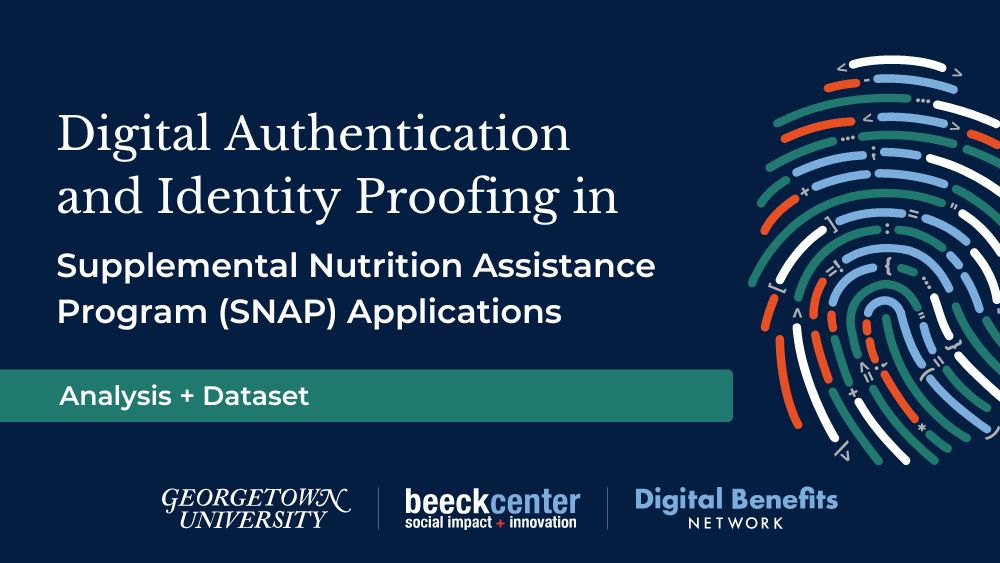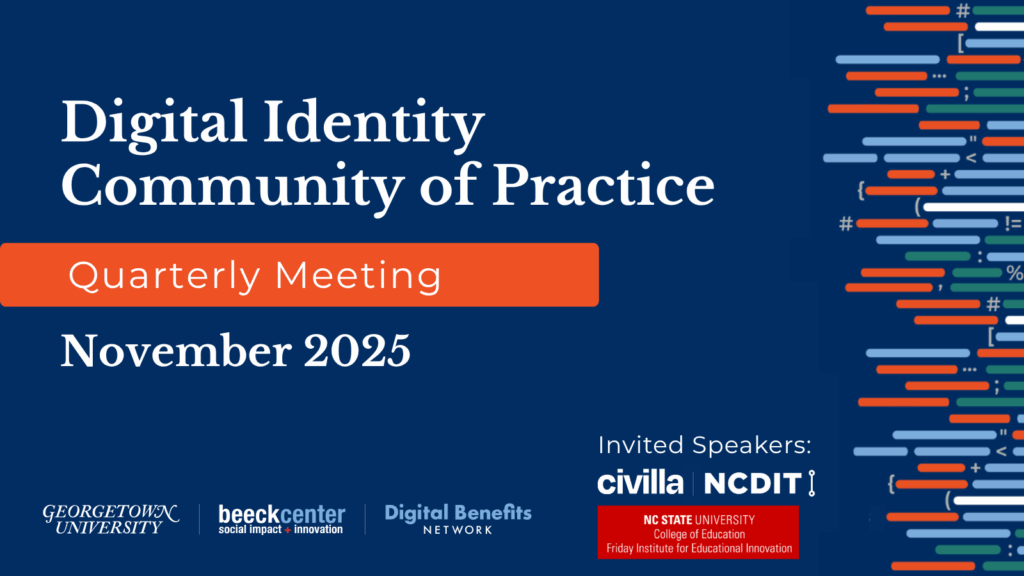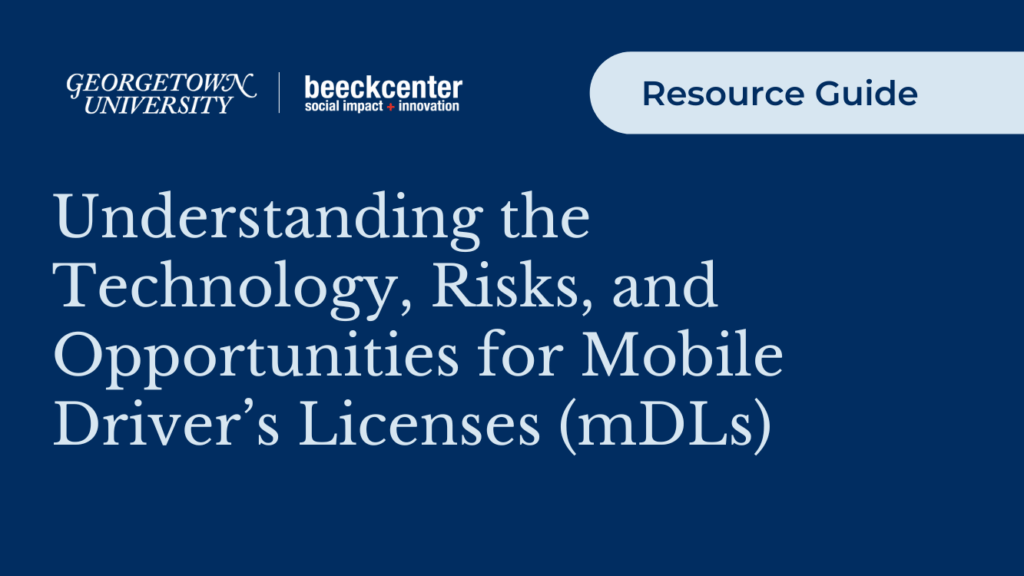Digital Authentication and Identity Proofing in Supplemental Nutrition Assistance Program (SNAP) Applications
On May 19, 2023, the Digital Benefits Network published a new, open dataset documenting authentication and identity proofing requirements across online SNAP, WIC, TANF, Medicaid, child care (CCAP) applications, and unemployment insurance applications. This page includes data and observations about authentication and identity proofing steps specifically for online applications that include SNAP.

← Back to Main Project Page
On this page, we share data and observations about authentication and identity proofing steps for online SNAP applications. Because some states combine or integrate applications for multiple programs, this page includes data from standalone SNAP applications and integrated applications. For entries that include combined or integrated applications, the data demonstrates claimant experience if they are applying for all available benefits included in our data collection – for example, Supplemental Nutrition Assistance Program (SNAP), Temporary Assistance for Needy Families (TANF), and MAGI Medicaid, – together.
We decided to approach data collection this way for practicality and also to document the most comprehensive possible experience for each application flow. A few states such as Kentucky and North Carolina also have standalone SNAP applications in addition to a combined application that includes SNAP. We have included those applications in this dataset, too.
The findings below outline our current understanding of online authentication and identity proofing requirements and practices for benefit programs. This data may change as we continue gathering feedback and updating our datasets. These points should be taken as general observations designed to help users quickly make sense of this dataset. You can also view the Digital Benefits Network’s data on authentication and identity proofing practices across core benefits programs on the Digital Government Hub.
High-level Findings
Integrated Applications
Most SNAP applications are combined applications that allow users to apply for multiple benefits at once such as SNAP and TANF, SNAP, TANF, and Medicaid, or SNAP, TANF, and Child care.
- Our dataset includes 54 SNAP applications, five of which are standalone SNAP applications.
Login and Registration Requirements
Most applications that include SNAP—39 out of 54 or 72%—require users to create an account in order to apply.
- Another ten applications make initial account creation optional. In some cases, linked applications that include SNAP may make it possible to skip account creation if a user is only applying for SNAP such as California’s MyBenefitsCalWIN or North Carolina’s e-PASS.
- Of the 39 applications that require logins to start, 14 application flows appear to require users to enter an email address.
- Importantly, some of these states including Kentucky, Mississippi, North Carolina have other applications for SNAP that do not require users to create an account or provide an email address.
- The U.S. Department of Agriculture’s Food and Nutrition Service (FNS) has previously stated that applications for SNAP cannot require users to submit an email address, since doing so creates an additional condition of eligibility.
- We found evidence that 44 sign-in processes for applications that include SNAP use additional authentication security measures. The most common authentication methods include security questions, email validation links, and one-time authentication codes sent via email.
This map shows authentication requirements in online applications that include SNAP across states. The color-coding on this map details whether applicants are required to sign-in to start an application; if you hover over an individual state on the map, you can also see: whether the application’s account creation process incorporates additional authentication security measures, whether an email address is required to create an account, if applicable, what type of account login is used (e.g., state SSO), and what benefits programs are included on the application.
Prevalence of Identity Proofing Requirements
Very few applications that include SNAP require users to take active identity proofing steps to submit online.
- Only two applications that include SNAP required identity proofing. Both use knowledge-based verification or KBV through the identity proofing vendor Experian, before users initiate an application.
- 11 other applications prompt optional identity proofing measures. This either allows a user to immediately skip the prompt, or if their identity cannot be verified online, allows them to continue. Nine of these applications are also using KBV through Experian.
Personally Identifiable Information (PII) Requested
Applications that include SNAP typically make it possible to submit online without having to disclose applicant Social Security numbers (SSNs).
- Applicants seeking SNAP benefits are required to provide SSNs as a condition of eligibility. However, the FNS has clarified that online SNAP applications should allow users to proceed through the application process without being required to submit their SSN.
- In 43 applications that include SNAP, it appears to be possible for applicants to submit online without disclosing their SSN. Three other applications explicitly state that providing a SSN is optional or recommended.
- Three applications that include SNAP appear to require users to submit their SSN at least when applying online for multiple benefits programs (e.g., SNAP and TANF or SNAP and Medicaid.
- Four other applications that include SNAP require SSN if an applicant indicates they have one, at least when applying online for multiple benefits.
Dataset
Digital Authentication and Identity Proofing in SNAP Applications Dataset: Spreadsheet
Digital Authentication and Identity Proofing in SNAP Applications Dataset: Gallery
Feedback and Engagement
We are publishing this dataset openly and publicly at this stage of our research to share knowledge and also to solicit feedback and engagement from various stakeholders and users. We envision this dataset as a starting point, and hope that people who visit the dataset will help ensure the accuracy of the data, fill in any gaps, conduct their own analysis, and share ideas for further extensions of this work.
This data represents a point in time. We also know that the information we were able to access may not reflect the most up-to-date experiences of claimants, and that application requirements and processes can be complex. For that reason, this data is not meant to be a guide for claimants seeking benefits. This project also does not provide context on state level policies.
To submit general feedback or specific feedback about an application included in the dataset, you can use our designated feedback form.
Data Collection: SNAP, WIC, TANF, Medicaid, and Child Care Applications
To collect data on SNAP, WIC, TANF, Medicaid and child care applications we collaborated with Code for America (CfA) during data collection for their 2023 Benefits Enrollment Field Guide. Our team assisted with a select number of assessments for CfA’s project and established a data sharing partnership to access their data and share our own data focused on authentication and identity proofing. CfA’s protocol involved creating accounts (if required) and filling in applications with sample applicant data without submitting it. This gave us access to additional information and texture about the process of applying for SNAP, WIC, TANF, Medicaid, and child care online.
We built out this data for SNAP, WIC, TANF, Medicaid, and child care applications between October, 2022 and February, 2023. After inputting data, we conducted an internal review of each application entry in February and March of the same year to ensure accuracy and consistency. Our team spent approximately an hour working with each application. We have also used the “Public notes” column in the dataset to document complexities and open questions.
← Back to Main Project Page


